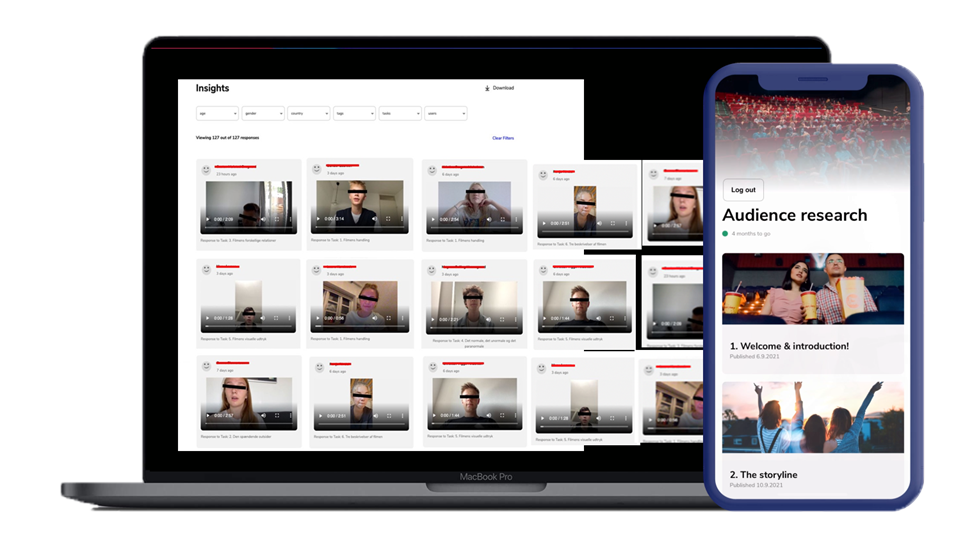
Everyone across the film industry – from creatives and producers to distributors and PR – obviously share an interest in connecting with audiences. But creatives typically approach the conversation according to their film's cultural and qualitative potential, while distributors tend to take the classic route of eyeing the commercial and quantitative potential. Roughly speaking.
Working in separate silos entails a risk of preaching to the choir and ignoring the full audience potential. Moreover, a pitfall for the commercial players, steeped in historical data and experience, lies in failing to consider the speed with which the market, the cultural context, audience behaviour and the frame of reference are changing.
Fortunately, discussions about cultural and commercial potentials are intersecting more now than ever before.
There is growing recognition that the bridge between creatives and more commercial players crosses a wide range of untapped potential regarding audiences.
Shifting the perspective earlier on
At the Danish Film Institute, we believe in the potential of filmmakers researching their audience with the same interest and curiosity with which they research their film’s history, characters, themes, visuals, universe and location. Or with the same zeal with which distributors track the box office and research market data.
Efforts should be made early on. They must be tailored and qualitative, based on an understanding of the audience as people and consumers. More than just a final spasm in the lead-up to a film’s premiere, efforts should be initiated already while developing and positioning the nascent film.
Insights applied early on can be a source of inspiration and reflection on connections between the film, the world around it and the audience’s lifeworld. If only to ensure and support that the creatives’ intentions and the film’s criteria for success will be seen as relevant, authentic, provocative, polemical, appealing or timely, and to avoid the stereotypical, predictable, not credible and repetitive.
Also, and above all, to avoid underestimating the audience.
At the heart of the matter are two questions: Why would the audience choose your film? And why would they talk about it? Options available to audiences have exploded in recent years. The battle for time and attention has become all-consuming, especially with the inroads made by streaming services and changing media habits. A sincere shift of perspective from the sender to the receiver is required.
Funding scheme: AudienceFocus
In 2020, the Danish Film Institute launched the funding scheme AudienceFocus (PublikumsFokus). With an annual budget of 3 million kroner (403,000 euros), the scheme has enabled the industry to work in an innovative and forward-looking fashion by including and researching audiences much earlier in the process, sometimes long before there even is a film.
Efforts supported by AudienceFocus are not meant to replace test cuts, test screenings and the numerous studies conducted every year by the Danish Film Institute and the industry. The scheme is intended as a supplement.

To date, 32 films and series across fiction and documentaries have conducted innovative and case-oriented audience research with support from the Danish Film Institute. The primary research methods have been mobile ethnography (video diaries) combined with automated data harvesting (or theme crawling) and qualitative interviews.
A large number of the films receiving research funding were at the development stage – that is, before a final draft existed and there was anything concrete to show the audience. Audience research has also been conducted on several projects in the editing phase or for finished films looking for inspiration to forge a deeper connection with their audiences.
Our experience so far clearly indicates that jointly putting the audience at the top of the agenda earlier on promotes a more nuanced understanding of the project among the parties.
The audience is it, for a reason
The streaming services have helped turbo-charge the importance of knowing your audience’s perspective in greater depth, in a fragmented media reality where the individual is increasingly front and centre.
The services were originally set up as giant "content buffets" with an all-you-can-eat-for-a-fixed-price approach. But they quickly learned that à la carte franchise-building series and movies are equally important to ensure their future position in the streaming wars. Offering a differentiated, curated and tailored selection makes them relevant and current to mainstream and niche audiences alike.
The streaming services have clearly been busy integrating new social trends and discussions into their content, ensuring currency and resonance with audiences where they live – from #MeToo to discussions about gender identity, ethnicity, climate, religion and sexuality in trendsetting series.
For years, Danish films have been highly successful at the box office and at home, critically and internationally. In the future, the Danish film industry – in addition to being masterful storytellers – can set themselves apart by being the ones who know Danish audiences best, not as digital data and consumers, but as people in a unique Danish context. That’s both cultural and commercial.

